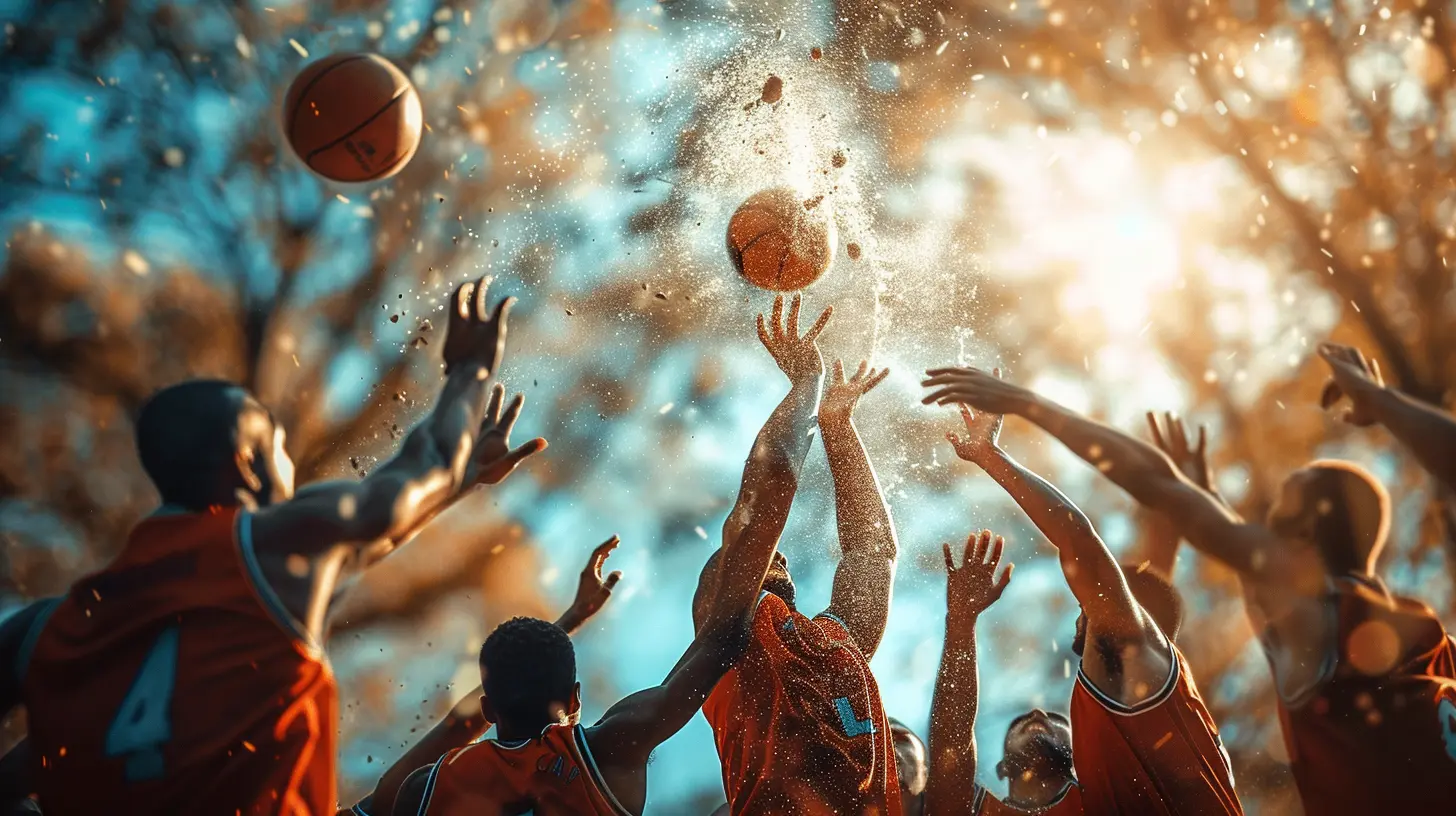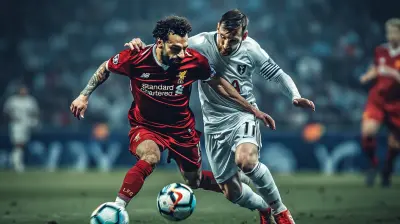Creating a Balanced Team Roster: Key Considerations
23 July 2025
Let’s be real—building a balanced team roster isn’t just about throwing together a bunch of talented players and calling it a day. Nope, it’s way more nuanced than that. Whether you’re coaching a youth sports team, drafting your fantasy lineup, or managing a pro-level squad, getting the right mix of skills, personalities, and roles is a delicate dance. Miss a step, and the whole thing can fall apart faster than a house of cards in a wind tunnel.
But when you get it right? Magic happens.
A well-balanced roster becomes a living, breathing unit that flows in harmony—like a jazz band riffing perfectly in sync, each player knowing exactly when to solo and when to blend into the background.
So, what does it take to build that kind of synergy? Let’s break it down.
Why Balance Matters More Than Just Skill
You could have a team packed with all-stars, but if everyone’s trying to be the hero, who’s doing the dirty work? Who’s setting picks, grabbing rebounds, covering weak spots, or playing defense like it’s their job (because, well, it is)?A balanced team:
- Fills every role, not just the flashy ones
- Has strong communication and chemistry
- Adapts to different opponents and game plans
- Minimizes internal drama and ego clashes
Bottom line? Balance isn’t just nice—it’s essential.
Understanding the Core Components of a Balanced Team
Let’s start with the basics. Think of your team like a puzzle. Every piece should serve a purpose, and no two should try to be the exact same shape.1. Roles and Responsibilities
Every sport has its own unique roles, whether it’s point guards and centers in basketball, wingers and defenders in soccer, or pitchers and catchers in baseball. The key is knowing what each role demands and making sure you have the right people to fill them.Ask yourself:
- Do I have enough leadership on the field?
- Who’s my playmaker?
- Who steps up in pressure situations?
- Who’s the glue guy/gal? (You know—the one keeping everyone together)
2. Skill Diversity
You want specialists, sure. But you also need versatility.Let’s say you have a team full of shooters. Sounds good, right? But what happens when the shots stop falling? Who's driving the ball, defending, or controlling the tempo?
Aim for a mix of:
- Offensive threats and defensive stoppers
- Speedsters and power players
- Veterans and up-and-comers
- Big personalities and those who lead by example
3. Physical and Mental Conditioning
This can be a sneaky area to overlook. You’ve got talent, but can your players go the distance in a tight game? Do they stay calm when the pressure’s on?A balanced roster needs:
- Players with endurance and strength
- Athletes who recover quickly
- Mentally tough individuals who don’t fold in crunch time
If they’re not in both physical and mental shape, they won’t last in the long run.
Chemistry: The Invisible X-Factor
You can’t always see it on the stat sheet, but anyone who’s played on a team knows—chemistry is everything.Great chemistry doesn’t mean everyone’s best friends off the field. It means they trust each other, respect one another’s roles, and know how to click when it counts.
Ways to build that chemistry:
- Team-building activities
- Open communication channels
- Clear conflict resolution structures
- Encouraging selflessness
Ever notice how some underdog teams beat the heavy favorites? That’s chemistry, baby.
Leadership Isn't Optional
Every team needs someone to steer the ship. Ideally, several people. Leadership doesn’t always mean being the loudest—it means being accountable, setting the tone, and lifting others up.Look for:
- Vocal leaders (on and off the field)
- Quiet leaders who lead by example
- Role models with strong work ethics
Coaches can’t be in the game with the players. That’s why player leadership is non-negotiable.
Youth vs. Experience
Now here’s the age-old debate: raw potential vs. seasoned experience.Rookies often bring fire, speed, and a sense of fearlessness. Veterans? They bring wisdom, composure, and strategy. You need both.
Young players:
- Bring energy and hustle
- Are often more teachable
- Can adapt to roles quickly
Veteran players:
- Understand game flow and adjustments
- Keep things steady during tough stretches
- Serve as mentors to younger teammates
Think of it as balancing salt and pepper—too much of one, and you lose the flavor.
Injury Risk Management
It’s not the most exciting part of roster planning, but it’s crucial. If your top player is injury-prone, what’s your backup plan?Consider:
- Depth at every position
- Fitness and injury history
- Versatility to cover multiple roles
A well-balanced roster can absorb the blow of an injury and keep marching forward. Depth isn’t a luxury—it’s a necessity.
Attitude and Work Ethic
Talent can only take you so far. A balanced team includes players who show up early, work hard, and stay accountable.Ask yourself:
- Do they lift the energy in practice?
- Do they respond well to criticism?
- Are they coachable?
Give me a team of grinders and hustlers over divas and prima donnas any day.
Culture Fit
Last but never least—does the player fit your team’s identity?Every successful team has a culture, whether it’s “next man up,” “play for each other,” or “grit over glamour.”
When you bring in someone new, think:
- Will they buy in?
- Can they adapt without ego?
- Do they respect the organization?
If you’re building a balanced team, culture isn’t just a buzzword—it’s your foundation.
The Importance of Coaching in Team Balance
A coach isn’t just a strategist—they’re the conductor of the orchestra.Great coaches:
- Know how to get the most out of every player
- Recognize strengths and hide weaknesses
- Instill confidence and accountability
- Foster an environment of growth and unity
Even the most balanced roster can underperform under poor coaching. And an average team? They can punch way above their weight under the right leadership.
Adjusting On The Fly
Let’s face it—no roster stays the same all season. Injuries happen. Slumps happen. Life happens.A well-balanced team adapts. Players slide into new roles, others step up, and the game plan evolves.
Having:
- Multi-position players
- Deep bench contributors
- Open-minded coaching staff
…will make all the difference when things get unpredictable (which they always do).
Tools to Help You Analyze Team Balance
In today’s world, you don’t have to rely on your gut alone. Use data and observation to stay sharp.Here’s how:
- Performance analytics (look at player efficiency, not just raw stats)
- Team meetings and one-on-one conversations
- Practice evaluations
- Video reviews
Information is power. Use it wisely to keep your roster humming.
Common Mistakes and How to Avoid Them
Let’s round this out by throwing a spotlight on some pitfalls people make when building a team.1. Overloading on one skill set
It’s tempting to stock up on shooters, speedsters, or goal-scorers. But again—who’s doing everything else?
2. Ignoring character and chemistry
Talent matters. But if they’re disrupting the locker room or not buying in? It’s a liability.
3. Not planning for the long haul
Endurance is key. Think playoffs, not just regular season.
4. Playing favorites
Let performance and effort guide your decisions, not personal relationships.
5. Failing to evolve
What worked last season might not work now. Stay flexible and adapt.
Final Thoughts: Balance is a Living, Breathing Thing
The most successful teams—the ones that win championships and build dynasties—aren’t just made of stars. They’re made of balance. A delicate mix of talent, attitude, effort, chemistry, and leadership.Creating a balanced team roster isn’t just a job—it’s an art. And like any masterpiece, it takes time, patience, and a whole lot of thought.
So whether you’re the coach, the GM, or the glue player who holds it all together, remember: the best teams don’t just play the game—they play it together.
And that right there? That’s the real win.
all images in this post were generated using AI tools
Category:
Team ManagementAuthor:

Onyx Frye
Discussion
rate this article
1 comments
Arwen Wolf
Great insights! Building a balanced team is all about mixing skills and personalities. It’s like cooking—each ingredient adds something unique. Can’t wait to see how these strategies play out in the upcoming season! Keep up the awesome work!
August 12, 2025 at 7:15 PM

Onyx Frye
Thank you! I’m glad you found the insights valuable. Excited to see how these strategies will enhance the team dynamic!


